In the kitchen of their home in Newtonhill, Allyson and Stuart Townhill are leafing through the family wall planner.
It contains the usual entries for an Aberdeenshire family with two children — a swimming pool visit, trip to the park, job commitments for Stuart, who works just up the A92 in Aberdeen.
The Townhill’s calendar, however, is just that little bit busier. As the pages flip past, reams of pink entries are visible, packing out the months amid a scattering of other colours.
Stuart is on hand to explain. “Pink’s generally something to do with medical,” he says. “It could be that someone’s coming to service the hoist or a doctor’s appointment.”
Allyson keeps on flicking through the pink-filled pages. There is a slight sigh, and a chuckle. “I mean, we’re pretty busy,” she says.
SMA – the rare condition that causes children’s muscles to weaken
Sitting quietly — for now, at least — with her mum and dad is the subject of at least half of those pink entries.
Lucy Townhill is 11 years old and has been in and out of hospital since being diagnosed with spinal muscular atrophy (SMA) when she was a toddler.
A rare genetic condition inherited at birth, SMA affects the motor neurons in the spinal cord, causing the muscles to weaken.
It’s a genetic form of MND, but one that affects very young children. These children, as they grow, can fail to develop basic skills, such as rolling over, sitting, standing and walking. In time, the condition can worsen, and also affect breathing and eating.
Until just a few years ago when new treatments became available, babies with the most severe and common form of SMA — type 1 — did not live beyond their first year. Doctors see only about three cases of SMA1 each year in Scotland.
Type 3 SMA and Lucy’s mobility issues
Lucy, though, has type 3 SMA, a less-extreme version of the condition. So does her 15-year-old brother Roy, who is not sitting at the table with us. In typical teenage boy fashion, he has made himself scarce while company is in the house.
But while Roy is largely unaffected by his SMA, Lucy has mobility issues that mean for some of her life she has used a wheelchair.
In the living room next door is a variety of equipment designed to help her, including a stander, a vertical support that – as the name suggests — helps her stand up straight to build bone density and muscle.
But despite these limitations, Lucy has got two things very much in her favour.
First, there are the recent medical advances within her lifetime that have transformed the understanding of SMA, and dramatically increased her chances of living a normal life.
Second, she has a fantastic sense of humour.
Take, for example, when we talk about why her scoliosis meant the end of a spinal injection treatment — “It just got too difficult to stab me in the back,” she says.
Later, when she gets out a lime-green fluffy toy used to explain to children what a motor neuron looks like, she explains that the real thing is actually microscopic, before adding deadpan: “And they’re not lime green.”
Why some SMA treatments taste worse than rotten strawberries
Not only is she funny. Sitting between her mum and dad, occasionally fiddling with her phone, she talks about her condition with a frankness that belies her age.
She was too young to remember her diagnosis. She can, however, reel off the treatments she’s undergone, starting when she was seven with nusinersen.
That’s the one she stopped last year because it required a spinal tap, something that was becoming more difficult as her spine became more curved.
She’s fine with the replacement treatment, which is taken orally, as the nusinersen injections were not pleasant. They required a general anesthetic and would leave her bed bound for days.
“You’d get quite scared about it,” she says of the injections that took place every four months.
In contrast, the only nasty thing about the new treatment is that it tastes like rotten strawberries. And even that’s better than the calcium drinks she takes for bone density.
Those things make her “puke”, she says, pulling a face.
‘How many thousands of pounds are in our fridge?’
One thing all the SMA treatments have in common is that they are extremely expensive.
Nusinursen, for example, costs £75,000 per vial, according to NICE, the National Institute for Health and Care Institute. Over a five-year period, the treatment cost per person is £1.35m.
Meanwhile, Zolgensma, a one-shot treatment delivered to babies with type-3 SMA, was until recently the most expensive drug in the world with a list price of £1.79m.
Lucy and Roy are, of course, covered by the NHS. But the fact that each dose of treatment potentially costs the same as a fleet of family cars does sometimes give Stuart pause for thought.
“We’ve got these drugs in the fridge,” he says with a laugh. “For some of them it’s like, how many thousands of pounds are in there?”
Those prices, though, are coming down. The past five years have seen remarkable advances made in SMA treatment, which has made existing drugs cheaper and more accessible.
“The condition doesn’t change but it adapts with the research,” Allyson says. “The medication is changing, and many life changes are happening.”
The only family in Aberdeenshire with SMA
Lucy was diagnosed because while she had learned to crawl, her walking lacked confidence. She’d hold on to things to steady herself. Doctors did a muscle biopsy and told Allyson and Stuart it was SMA.
“We thought it was a brand of baby milk,” Allyson recalls.
Roy was then tested, and he too came up positive. It was a difficult time for the family, especially because Roy and Lucy were the only ones in Aberdeenshire known to have the condition.
“It was like a death sentence,” Allyson recalls. They were in the dark about the long-term effects it would have on the children, whether they would be able to walk in the future.
Stuart jumps in. “The doctors couldn’t tell you that either, though,” he says to Allyson.
Allyson continues: “The doctors and specialists said, well hopefully they will last until their teens. There were discussions of muscles and of hearts — the heart is a muscle, is that affected? Eating and drinking, what muscles are affected?”
Beside her, Lucy has opened a box of breakfast cereal and is noisily pouring out a bowl.
“My eating is fine,” she says, tucking into the snack.
“Yes,” says Allyson, looking at her. “You’re very good at eating.”
‘I was tremendously guilty about it’
With Allyson’s parental fear came guilt.
Children are born with SMA if both parents have a faulty gene that causes the condition — one in 40 is a carrier, including Allyson and Stuart.
Of course, neither of them knew it. Screening newborns for SMA happens in other countries but not in the UK, though there are some in healthcare calling for exactly that. Especially as the best new treatments need to start before the age of six months.
And anyway, as Stuart points out, when Lucy and Roy were born there was little point in screening because no treatments were available.
Nevertheless, says Allyson, “I was tremendously guilty about it.
“I thought, oh no, have I broken my children? As a parent, you protect your children.”
‘It’s harder where it’s a muscle-wasting condition’
The outlook for the Townhills is good.
Allyson says Roy’s condition is not getting any worse — he gets about Newtonhill on an electric bike but that’s about his only concession to his SMA.
Lucy’s condition is more complicated. Her early progress on nusinursen was amazing and Allyson remembers the thrill of seeing her achieve tasks such as brushing her own hair.
But as Lucy has grown in size — putting more demands on her muscles — progress has slowed, and occasionally gone backwards. A few months back, during a trip to Aviemore, Lucy broke both of her legs when she accidentally took a tumble.
One of the side effects of SMA is weakened bones because they are not used as much, and it was the fourth time she had broken either one leg or both.
Meanwhile, she has a big decision to make. Doctors are worried Lucy’s spine will become more curved as she gets older, so have suggested spinal fusion surgery to halt future problems.
The complication is that the spinal fusion means she will relinquish some mobility in her upper body.
“It’s harder where it’s a muscle-wasting condition,” says Allyson. “Lucy has quite a lot of upper strength but then if she went and got spinal [fusion] the question is, how much would she then lose?”
A question of independence as Lucy gets older
For Allyson, especially, this is an important question. A teacher at a local school, she is a wheelchair user herself, though her condition has nothing to do with SMA. She was paralyzed in an accident at the age of 12.
Because of that, she has always tried to ensure her children are as independent as possible.
“It’s frustrating as a child, I totally get how Lucy feels,” she explains. “And that’s why when she joined Cubs or Beavers we wanted her to participate in everything, so she wasn’t left sitting there watching others.”
That attitude has paid off.
Lucy says having SMA can be frustrating.
But she loves going swimming, and taking part in activities organised by Charlie House, the charity based out of the Royal Aberdeen Children’s hospital.
Meanwhile, she’s looking forward to finishing primary school in Newtonhill before heading to Mackie Academy after the summer.
There, she’ll have more opportunities. Like the People’s Parliament she currently takes part in and through which she successfully lobbied the local council to stop bins blocking nearby pavements, so wheelchairs can pass.
For Allyson, activities such as this are crucial for Lucy as she gets older.
“It’s important that she has a voice,” she explains, before pointing again to the pink entries in the wall planner.
“You know, all this stuff I do for her now, she’ll potentially have to do as an adult for herself, so I want her to have understanding of it.”
Beside her, Lucy groans, so Allyson turns to her.
“I know, it sounds scary,” she says, “but once you start doing stuff yourself, you’ll figure it out.”
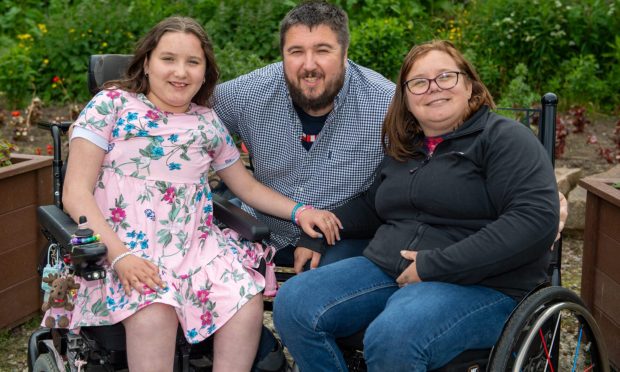
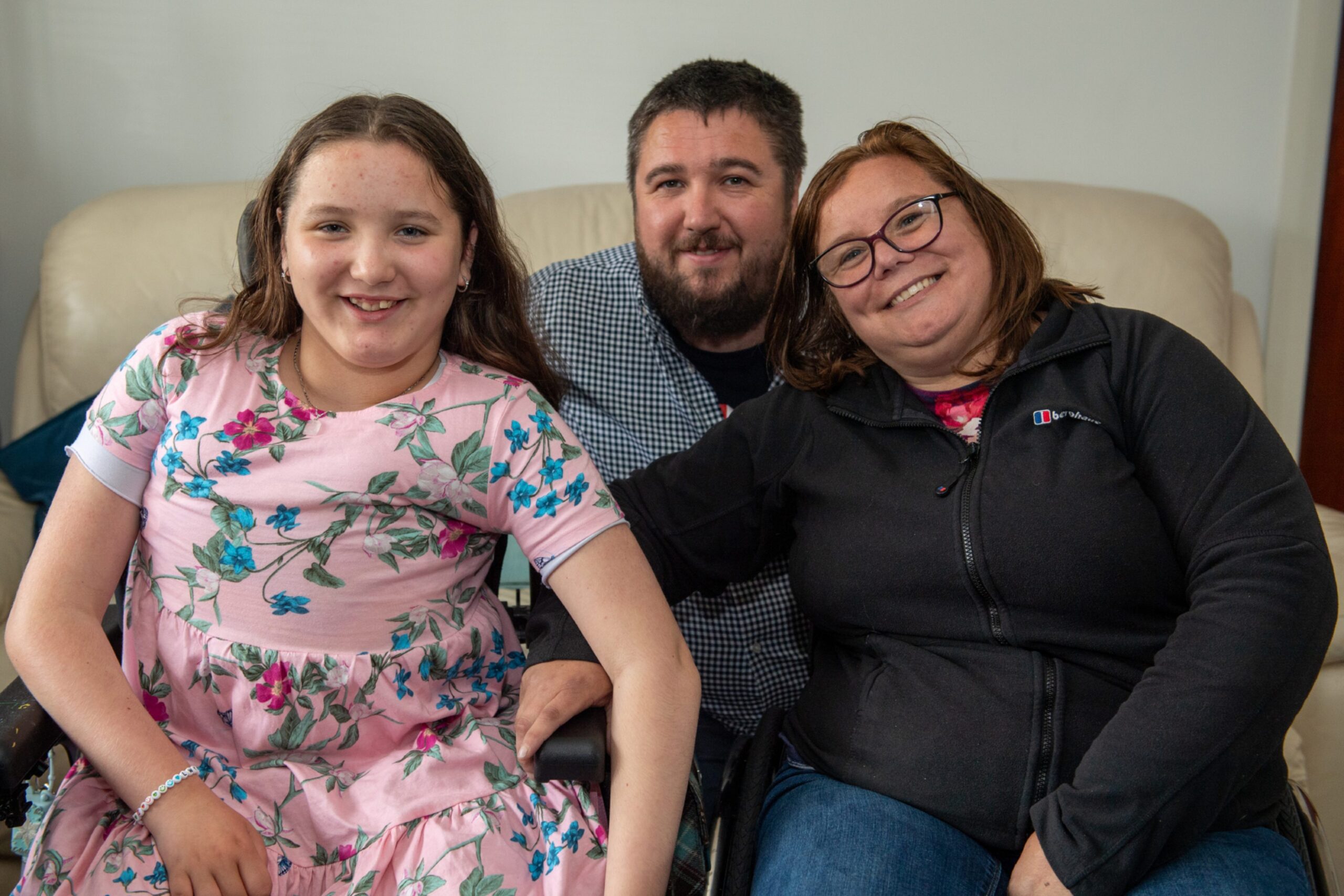
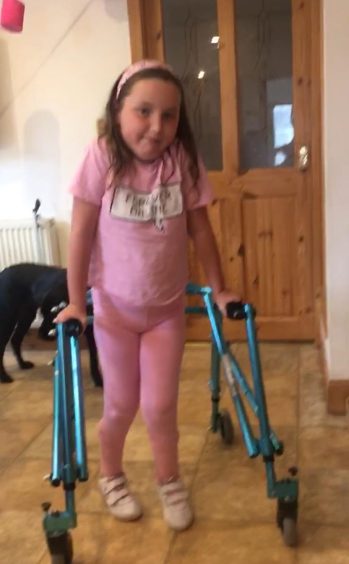
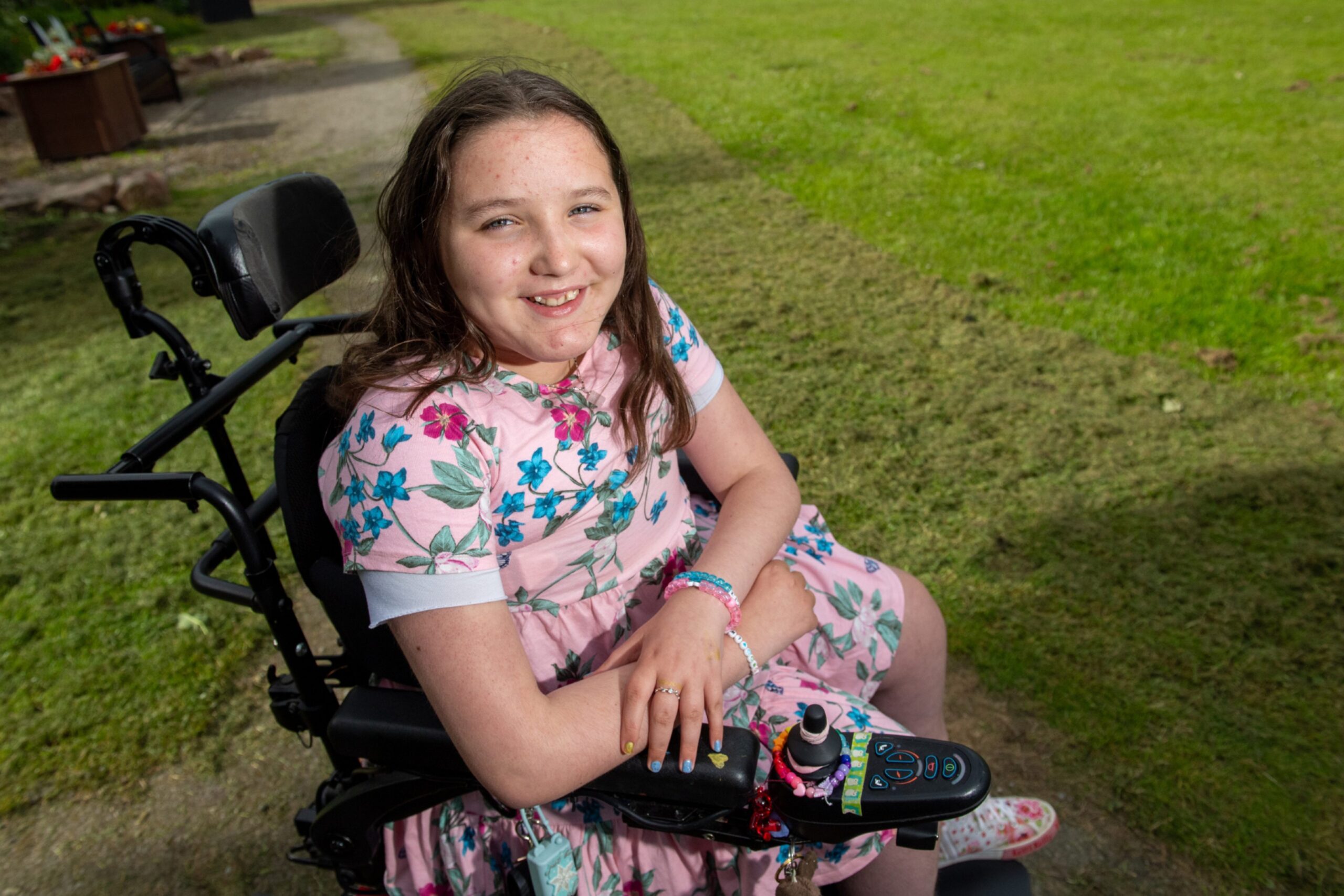
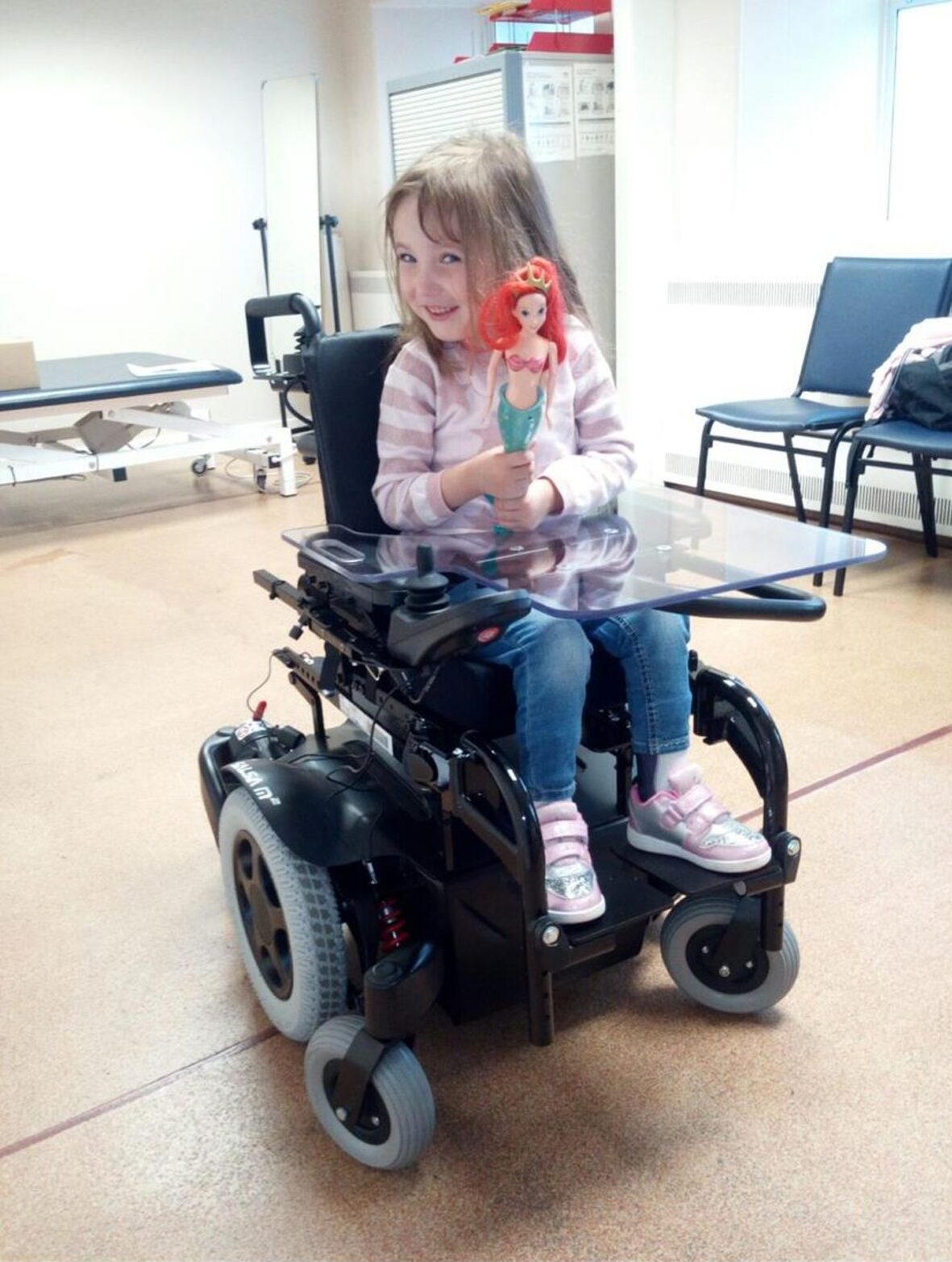
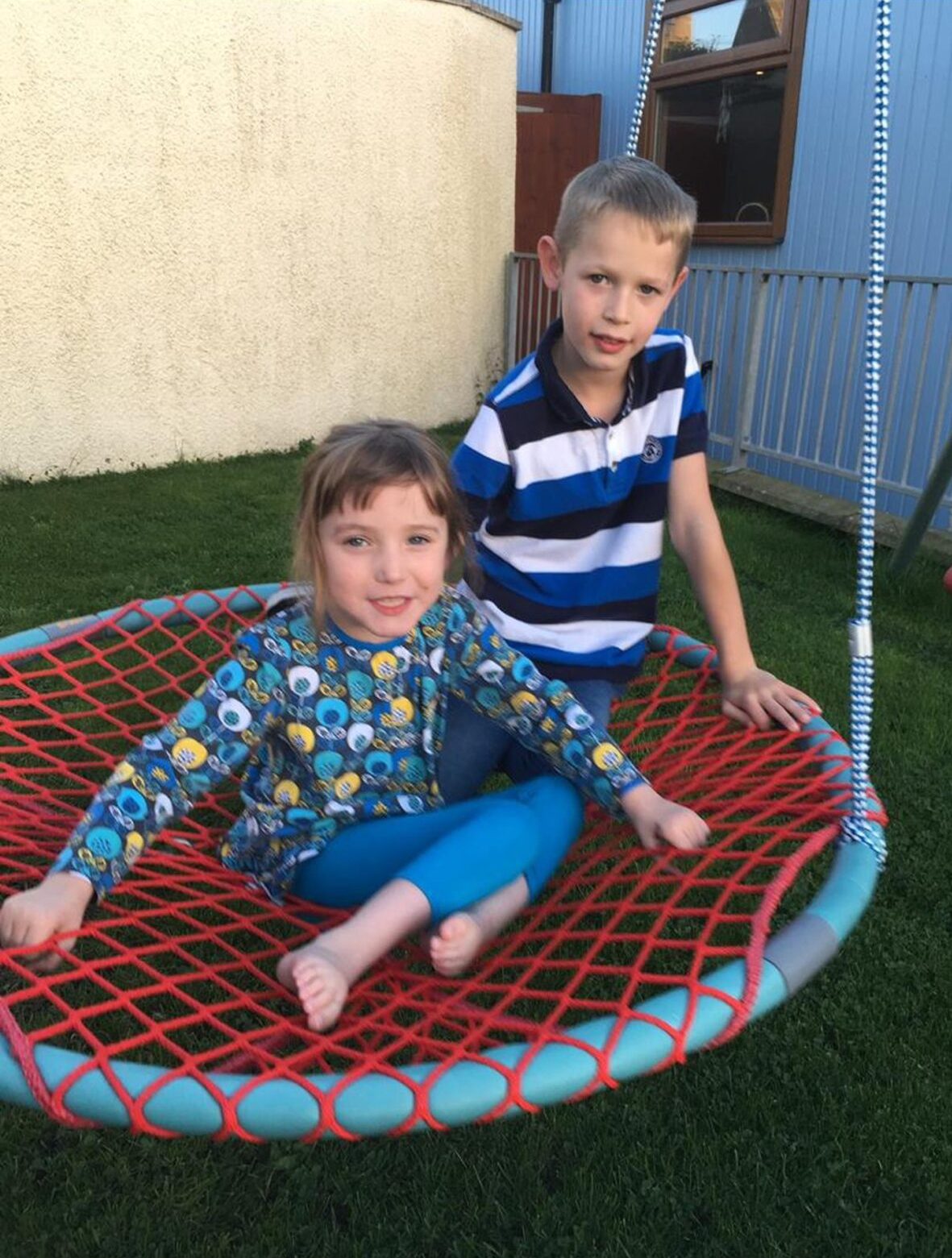
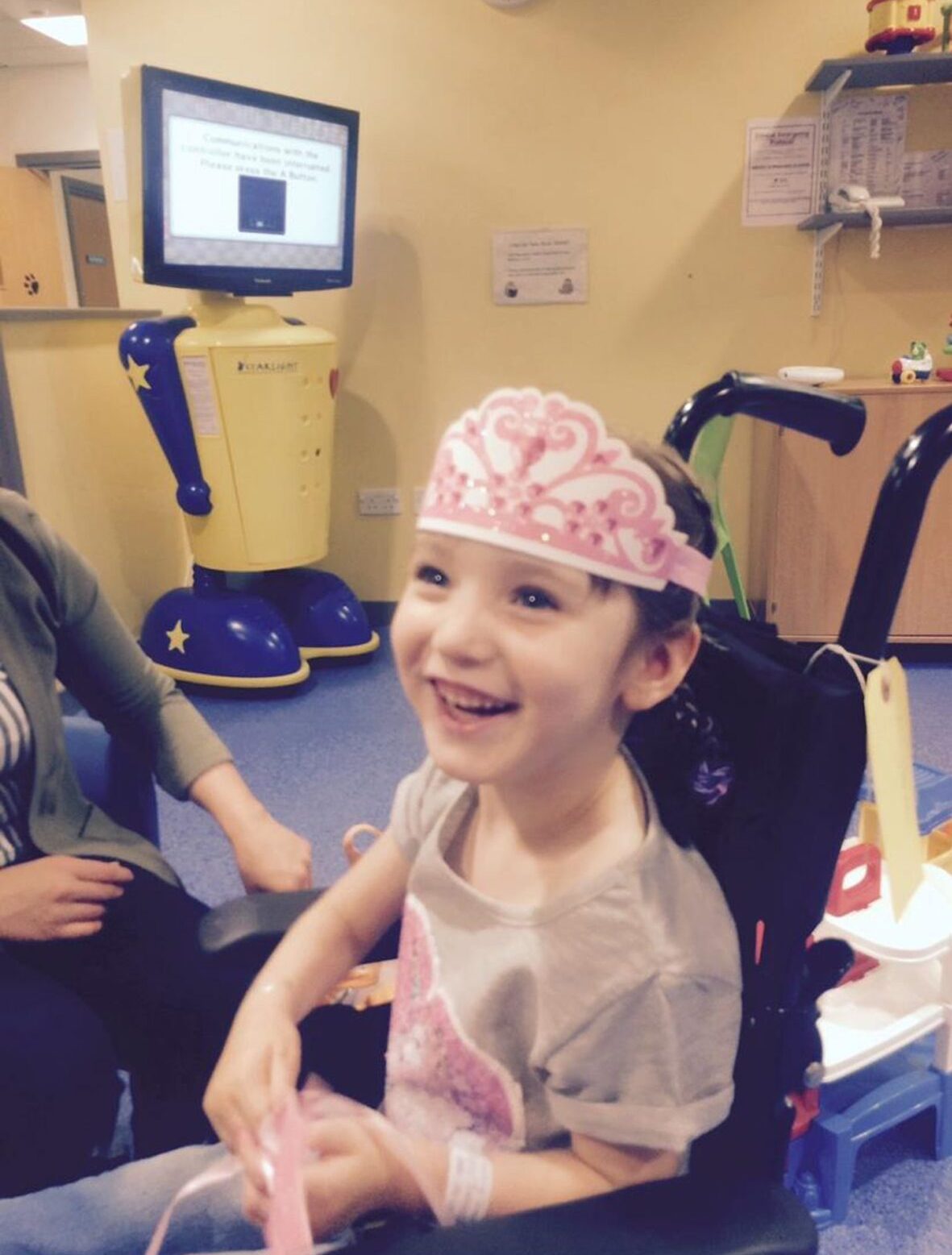
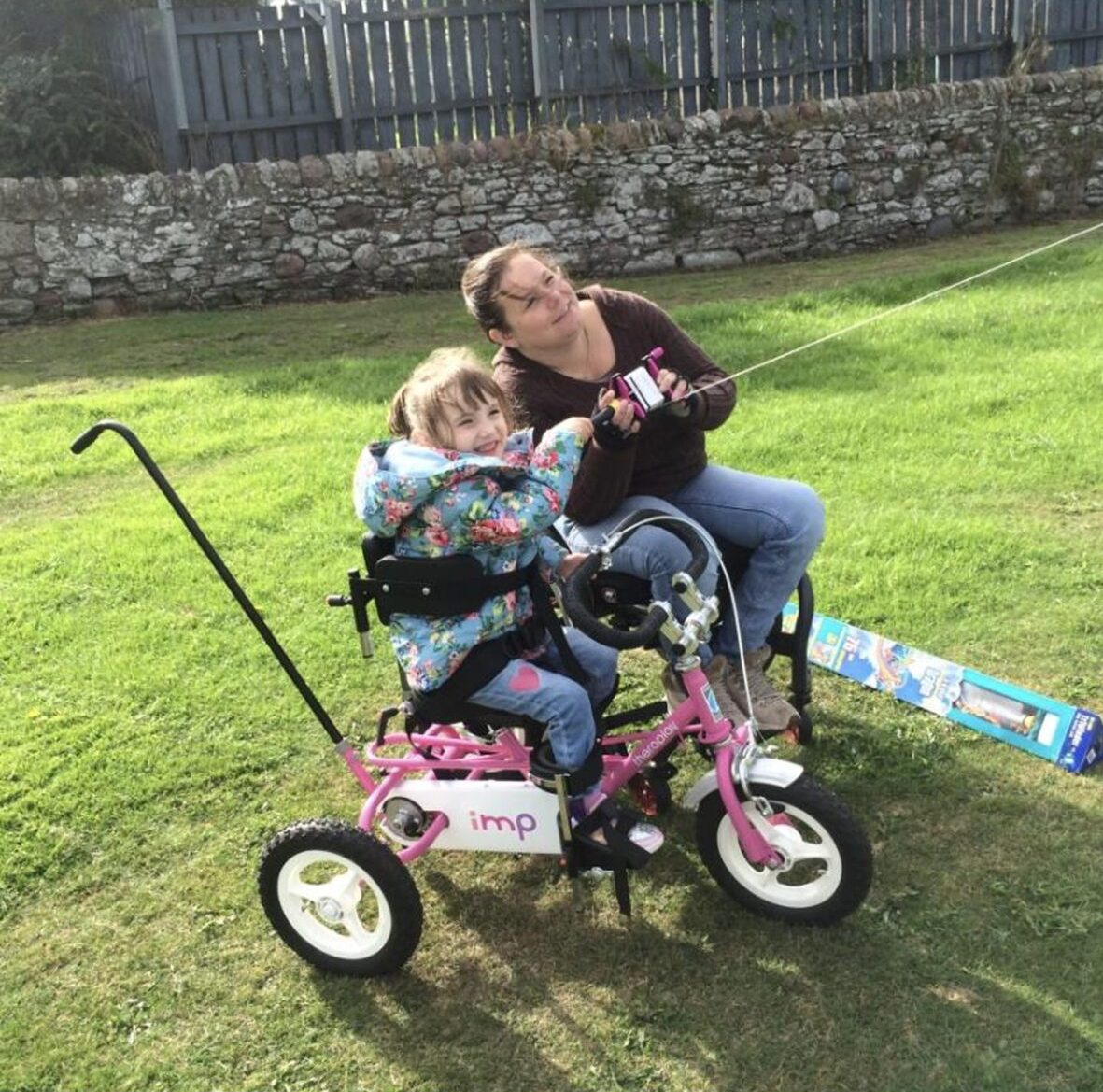
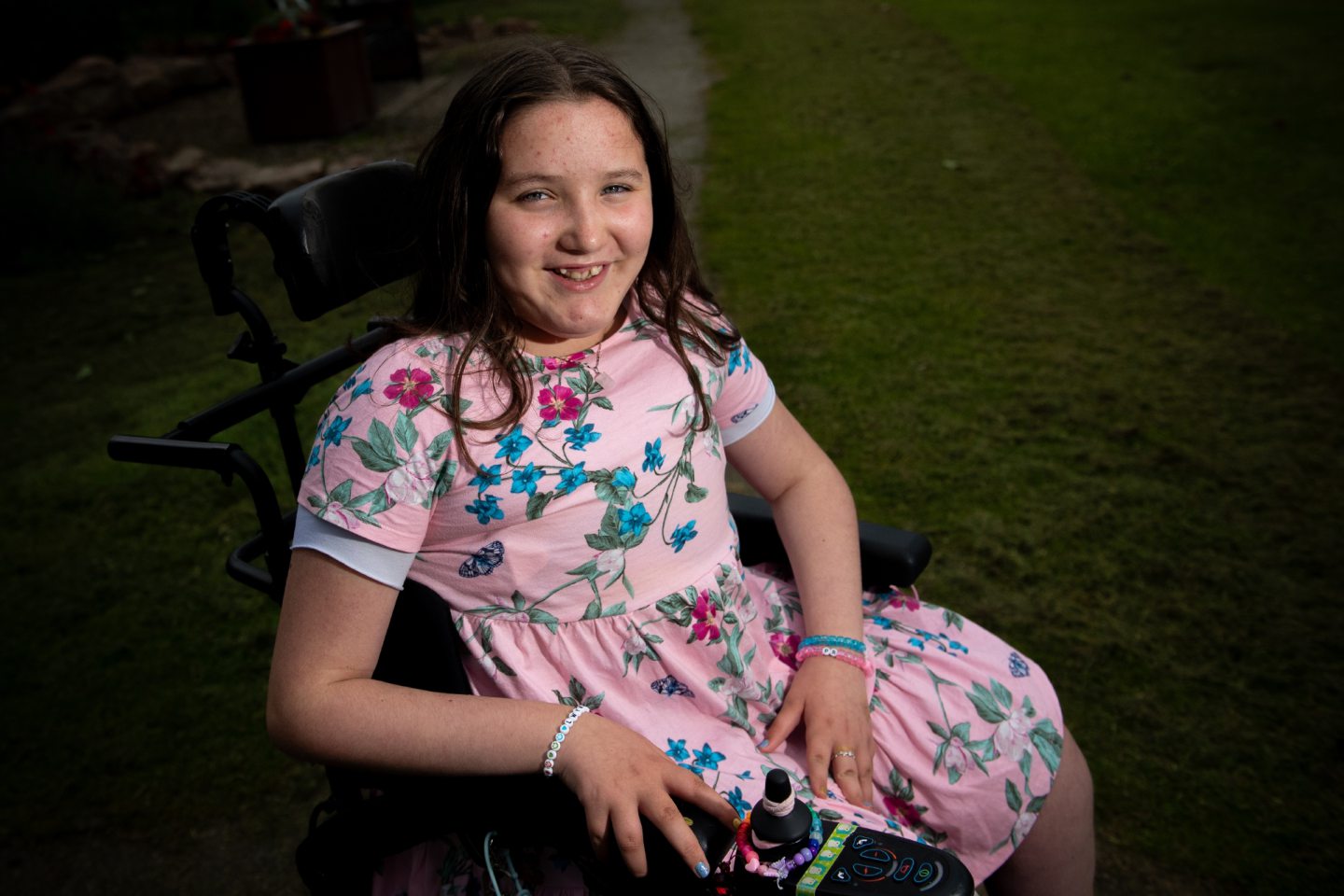
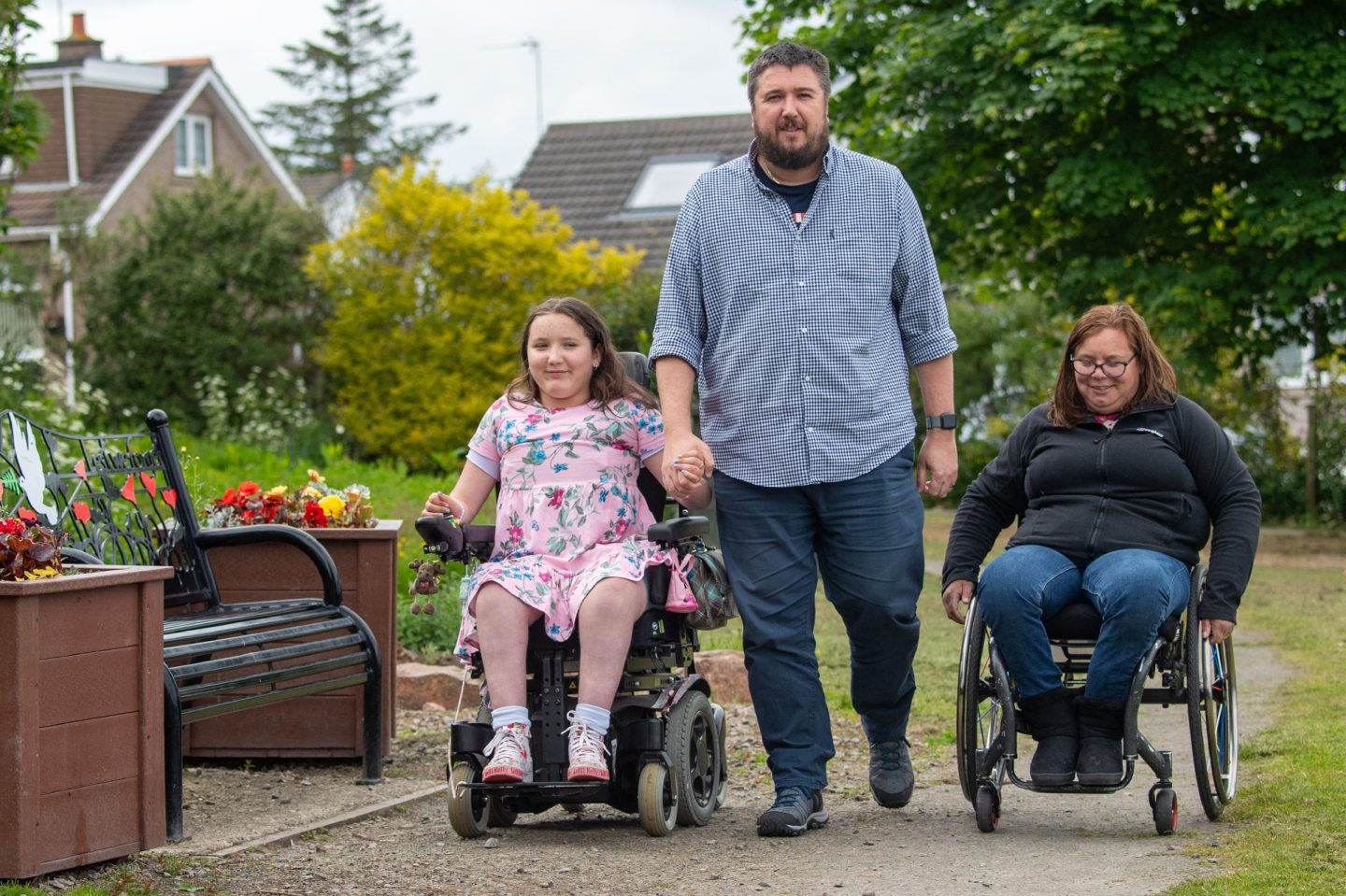
Conversation